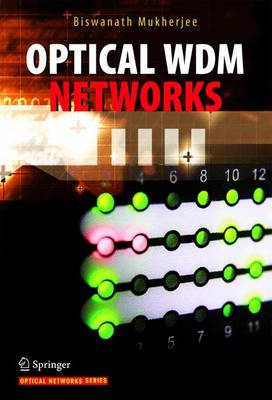Optical Networks
3 total works
Covers these key topics:
Shared-mesh protection for optical WDM networks.
Survivable traffic grooming for hierarchical optical WDM networks.
Survivable data over next-generation SONET/SDH with inverse multiplexing.
Traffic Grooming in Optical WDM Mesh Networks
by Keyao Zhu, Hongyue Zhu, and Biswanath Mukherjee
Research and development on optical wavelength-division multiplexing (WDM) networks have matured considerably. While optics and electronics should be used appropriately for transmission and switching hardware, note that "intelligence'' in any network comes from "software,'' for network control, management, signaling, traffic engineering, network planning, etc.The role of software in creating powerful network architectures for optical WDM networks is emphasized.
Optical WDM Networks is a textbook for graduate level courses. Its focus is on the networking aspects of optical networking, but it also includes coverage of physical layers in optical networks. The author introduces WDM and its enabling technologies and discusses WDM local, access, metro, and long-haul network architectures. Each chapter is self-contained, has problems at the end of each chapter, and the material is organized for self study as well as classroom use. The material is the most recent and timely in capturing the state-of-the-art in the fast-moving field of optical WDM networking.


